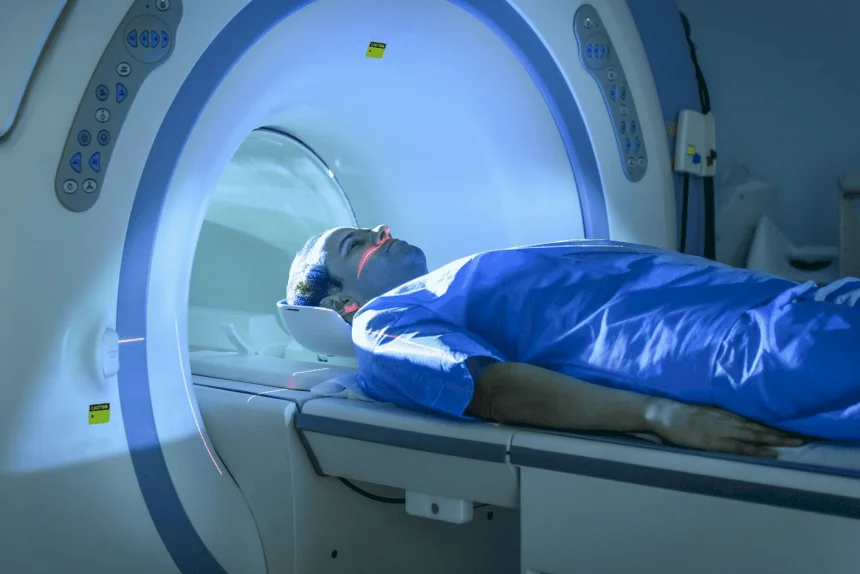
New Study: The Rate of Body Aging Can Be Determined from a Single Brain Image
SadaNews - Researchers in a new study claim that scientists can now determine the rate of aging in the body based on a single brain image, according to a report published by "Live Science" citing the journal "Nature Aging".
Biological Aging
A team of researchers has developed a standard for biological aging based on magnetic resonance imaging (MRI) of the brain. The research team states that this tool is capable of predicting an individual's future risk of cognitive decline, dementia, and chronic diseases such as heart disease, physical frailty, and premature death.
New Measurement Method
The lead researcher, Ahmed Al-Hariri, a professor of psychology and neuroscience at Duke University, said: "The research paper presents a new way to measure a person's rate of aging at any moment using information available from a single MRI scan of the brain," explaining that "aging faster increases the risk of many diseases, including diabetes, heart diseases, stroke, and dementia."
Dunedin Study
Al-Hariri and his colleagues used data from the Dunedin Study, which followed 1,037 people from Dunedin, New Zealand, from birth into middle age. These participants, born between 1972 and 1973, underwent 19 periodic assessments to check for heart, brain, liver, and kidney function, among other things.
White-to-Grey Matter Ratio
To develop their tool, the team analyzed MRI brain images taken from this group at the age of 45 and processed data related to brain structure - the size and thickness of different brain areas and the ratio of white matter to grey matter - through a machine learning algorithm.
Neuroimaging Calculated Aging
The researchers compared processed brain data with other data collected from participants at the same time, such as physical and cognitive decline tests, self-reported health conditions, and facial aging markers, such as wrinkles. They confirmed that greater declines in those areas are associated with a faster overall rate of aging and then linked the characteristics of brain data to those metrics. The researchers named their resulting model "DunedinPACE - Neuroimaging Calculated Aging Rate."
DNA Molecules
Previously, the research team developed a similar tool called DunedinPACE (Dunedin Biological Aging Computed from the Epigenome). This metric focused on methylation - chemical marks associated with DNA molecules - in blood samples to estimate the aging rate of individuals. Methylation is a form of "epigenetic change," meaning it alters gene activity without changing the underlying DNA code.
Epigenetic Data
Al-Hariri stated: "DunedinPACE has been widely adopted in studies where epigenetic data were available," explaining that "DunedinPACNI now allows studies to be conducted without epigenetic data but using MRI brain imaging to measure accelerated aging." The researchers directly compared DunedinPACNI to DunedinPACE and found that they arrived at similar results.
To assess whether their new tool is beneficial beyond Dunedin, the researchers used it to estimate the aging rate using MRI images from other datasets, including 42,000 MRI images from the UK Biobank; over 1,700 MRI images from the Alzheimer's Disease Neuroimaging Initiative (ADNI); and 369 images from the BrainLat project, which includes data from five South American countries.
Neuroimaging Research
Ethan Whitman, a co-researcher from Duke University, stated, "Ensuring that [the study’s] results generalize across datasets and demographic groups is a top priority for neuroimaging research."
Aging and Chronic Diseases
The researchers found that the Dunedin PACNI initiative can also estimate aging rates in these other groups and that it did so accurately compared to other metrics used previously. Both the UK Biobank and ADNI also include metrics for specific health effects of aging, including physical frailty tests such as grip strength and walking speed, as well as rates of heart attacks, strokes, chronic obstructive pulmonary disease, and all-cause mortality within age groups. Using these additional metrics, the team was able to link faster aging rates, as defined using DunedinPACNI, to increased risks of heart attacks, strokes, chronic obstructive pulmonary disease, and death.
"A Big Win for Researchers"
Dr. Dan Henderson, a primary care physician at Brigham and Women's Hospital and a professor of medicine at Harvard Medical School who did not participate in the study, said: "Its success with BrainLat data is a big win for researchers because it supports the potential for generalizing the model," adding that "it is still worthwhile to study other datasets where genetic and other factors can differ fundamentally."
Henderson said he sees the potential for using the Dunedin database for PACNI clinical analyses ultimately instead of traditional health metrics to improve medical interventions for each patient individually.

Windows and Doors Generate Electricity.. An Innovation that Changes the Future of Cities

Artificial Intelligence: A Hidden Danger to Human Minds

In Numbers.. Real Madrid the "Nightmare" of Barcelona in the Spanish Super Cup

New Data Breach at Meta Reveals Sensitive Information for Millions of Instagram Users

Most Expensive Coaches in Football History

Undiagnosed Diabetes: Warning Signs Your Body Sends That Should Not Be Ignored

Egypt's Representative Professions Syndicate Head Reveals Details About Sherine's Absence

